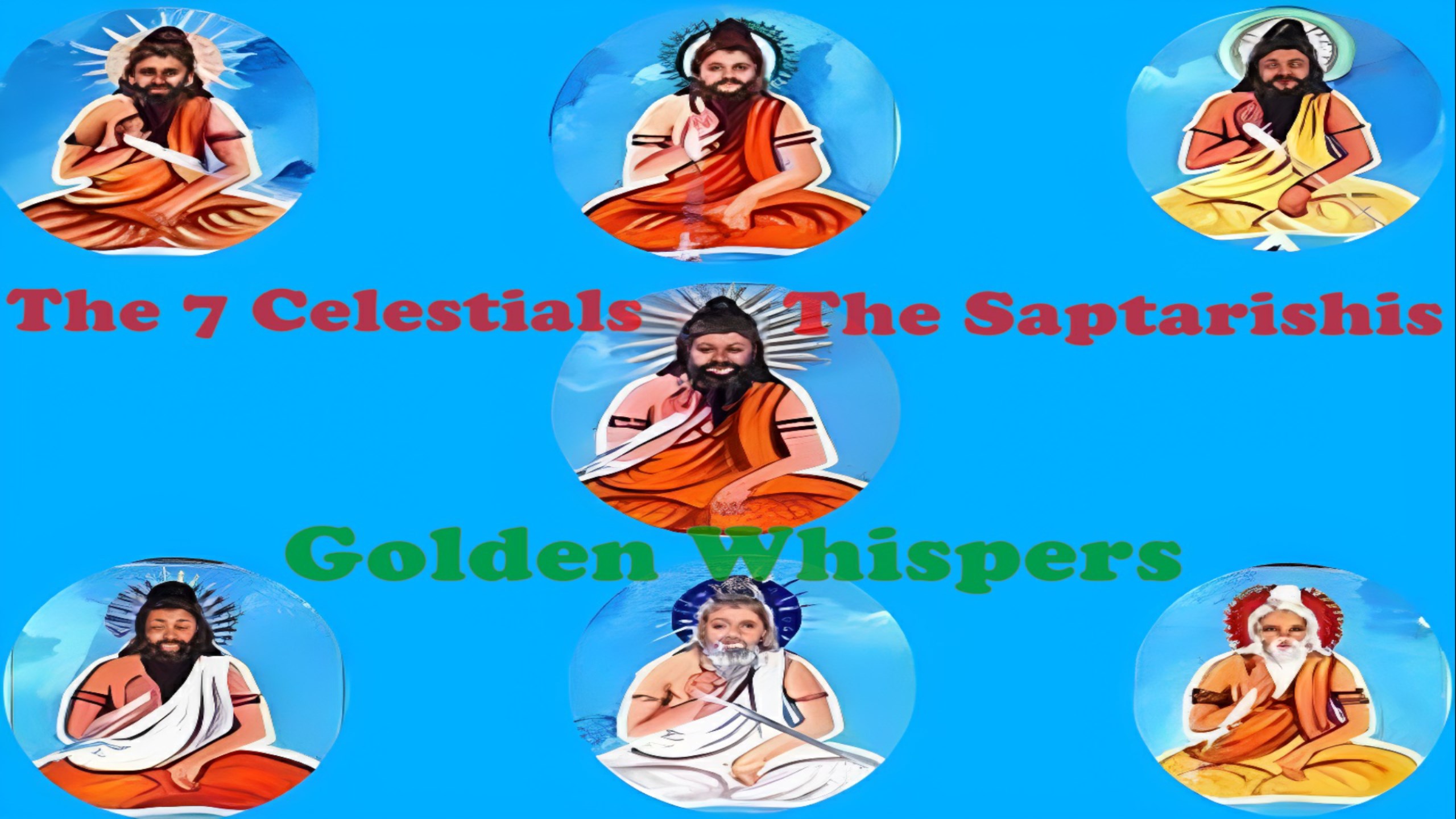In ancient India, the Saptarshi or Saptarishi were the famous seven sages. Marichi, Atri, Angira, Pulaha, Kratu, Pulastya, and Vasishtha lived in the modern Kalpa’s Svayambhuva Manvantara (Sveta-Varaha). The Vedas and other Hindu scriptures extol the sages several times. They are thought to live in the sky as the Saptarshi Mandal Nakshatra Mandal (constellation). Let us learn more about them.
Saptarshi Marichi:
Rishi Marichi is a mind-born son of Lord Brahma and one of the Saptarshi in Svayambhuva Manvantara, according to Hindu mythology. His name literally means “a beam of light from the sun or the moon.” Marichi, as mentioned in the Vedic writings, is also one of the seven major sorts of storm gods. He married Kala (also known as Dharmavrata in other translations), and they had another Vedic guru named Maharishi Kashapya.
Rishi Atri:
Atri is a Saptarshi in both Svayambhuva and Vaivasvata Manvantara. He was well-known for his honesty and sincerity. He married Anasuya, a deeply religious woman capable of magical feats. In Hinduism, Anusuya is known as one of the seven chaste wives. Atri’s life spanned several yugas. He appeared in both the Ramayana and the Mahabharata. His wife Anusuya was regarded as one of Hinduism’s seven pure women. Brahma, Vishnu, and Maheshwara (Shiva), generally known as the Trinity, conferred a boon on her because they were pleased with her devotion and stringent austerities. She was blessed with Tridevas as sons. Durvasa, Dattatreya, and Chandra were the names of Atri and Anusuya’s three sons.
Saptarshi Angira:
Angira (also known as Angiras or Angirasa) is strongly related with Agni (fire), as he was born from Varuna’s Yajna fire. Surupa married Angira. Samvartana, Utatya, and Vrihaspati were their three sons. Angira’s narrative in the Mahabharata raised his profile. Angira married Shraddha and had seven sons, according to another source: Brihat Keerti, Brihat Jyoti, Brihat Brahma, Brihat Manas, Brihat Mantra, Brihat Bhanu, and Vrihaspati. Angira had daughters named Bhanumati, Raka, Cinee Vali, Mahishmati, Guhu, Mahamati, Archishamati, and Yogasiddhi, according to the Mahabharata. Angira is also supposed to have married Smriti, the daughter of Prajapati Daksha.
Saptarshi Pulaha:
Sage Pulaha is thought to be Lord Brahma’s fifth son and one of the Saptarshi. Pulaha married Kshama, Prajapati Daksha’s daughter. Kardam, Kanakpith, and Urvaribat were their boys, while Pivari was their daughter. Pulaha married Gati, the daughter of sage Kardam and Debahuti, according to the Bhagavata Purana. Karmashreshtha, Baryangsu, and Sahisnu were Pulaha and Gati’s three sons. Pulaha learned from Sanandan and passed on his expertise to the great teacher Gautama. He did rigorous austerities on the banks of the Alaknanda River and was honoured to attend Devaraja Indra’s assembly for him. It is stated that King Bharata abandoned all of his aspirations and sought refuge in the affections of Pulaha. Sage Pulaha is said to have been a devout follower of Lord Shiva. As a result of Pulaha’s dedication, Shiva appeared in Varanasi as Pulahaeshwar.
Rishi Kratu
Kratu is thought to be Lord Brahma’s brainchild, having been introduced into the world by Brahma’s hand. He is a Saptarshi of the Svayambhuva Manvantara. Kratu married Santhati or Sannati, the daughter of Prajapati Daksha. They had 60,000 children, according to the Bhagavata Purana, who became known as Valakhilyas (pigmy sages). Punya and Satyavati were Kratu Rishi’s sisters. He was also born in Vaivasvata Manvantara as a result of Lord Shiva’s blessing, although he had no relatives at the time. Kratu was also a descendant of Sage Kardama. Idhvaaha, Rishi Agastya’s child, was adopted by him. He is known as a Bhargava (a descendant of Rishi Bhrigu). Poulami is the name of Kratu Rishi’s mother as mentioned in the Matsya Purana. Rishi Kratu is a Visvadeva (Kratu, Daksha, Vasu, Satya, Kaalakama, Muni, Kuraja, Manuja, Beeja, and Rochaman).
Rishi Pulastya:
Pulastya was one of Brahma’s ten human sons, according to Hindu mythology. In Svayambhuva Manvantara, he is one of the seven Saptarshi (sages). Muni Pulastya’s children included both Rakshasas (demons) and Kinnars (celestial musicians), according to the Mahabharata. Rishi Vishrava was his son, and his grandchildren were Kubera, the deity of riches, and Ravana, the main figure in the Ramayana epic. Yaksha is also thought to be Pulastya’s offspring. Pulastya was married to Habirbhu, one of the nine daughters of the sage Kardam. Vishrava, Pulastya’s son, had two wives: Devavarnini and Nikasha. Kubera, Devavarnini’s son, was the deity of wealth, and Ravana, Kumbhakarna, and Vibhishan were demons. Surpanakha, the demon daughter of Sage Pulastya, was also a demon.
Saptarshi Vasishtha:
The word ‘Vasishtha’ means incomparable brightness. Rishi Vasishtha, as his name implies, has the ability to eliminate all negative traits such as desire, wrath, stinginess, envy, and pride. Rishi Vasishtha is the true author of Yog Vasishtha or Vasishtha Yoga Samhita. He was a contributor to the Vedic scriptures. He was regarded as the most important holy figure in Sage Adi Shankara’s Vedanta school. In the Valmiki Ramayana, King Dasaratha performed the Putresti Yajna for sons, and Vasishtha served as the Yajna’s principal priest. He was also Lord Rama’s and his brothers’ teacher.


Such a fantastic blog – it’s like a breath of fresh air every time I visit!
Thanks a lot.
The impact of this blog’s positive messages is truly commendable.
Thank you so much.
You’ve been great to me. Thank you!